UV Light Water Sterilizers & Parts
-
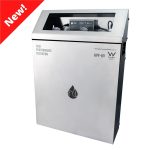
Filtration Systems with UV Sterilizers (5)
-
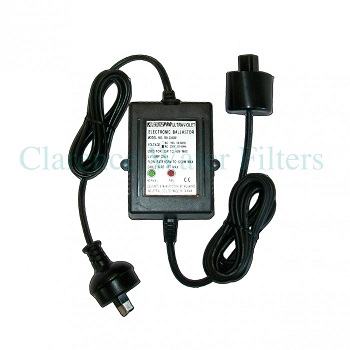
Replacement UV Ballasts & Plugs (18)
-
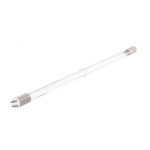
Replacement UV Lamps (34)
-
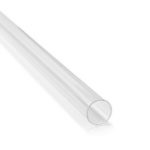
UV Quartz Sleeves Thimbles & O-rings (45)
-
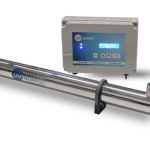
Ultra Violet UV Sterilizers (9)

UV Water Sterilisers
Clarence Water Filters Australia is one of Australia’s leading providers of water steriliser filtration systems.
We have wide range of Ultra Violet UV water treatment sterilizing purifiers available to suit most situations, from domestic water purification to industrial scenarios. If you need a larger system or have a special application just contact us as we will advise you on the best UV unit for your needs.
What Is A UV Water Steriliser?
A UV water steriliser uses powerful beams of ultraviolet light to kill or incapacitate bacteria, viruses, protozoa, cyst parasites (giardia, cryptosporidium etc) and algal spores.
They are useful for situations where you are consuming untreated water obtained from Rainwater Tanks, Dams, Creeks, Rivers, Groundwater sources and Bores.
How Does UV Water Sterilisers Work?
Incoming water is fed into one or more sediment filters to reduce the level of particulate matter in the water. This is an important step as it ensures that contaminants in the water cannot hide behind particulates and escape exposure to the UV light.
The water then flows through a stainless steel chamber. Inside the chamber is a quartz sleeve or thimble which protects the UV light. The light never comes in direct contact with water.
The contaminants in the water are rapidly eradicated by the powerful beams of light.
A carbon filter can also be used to improve the taste/odour of your water and reduce chemical contaminants like pesticides from overspray, herbicides, volatile organic compounds, and more.
If the water is sediment-heavy, multiple stages of sediment filtration may be required.
How Do You Maintain A UV System?
There are three components which regularly need to be replaced on a UV Sterilizer:
1. UV Globe
The globe/s used in UV system gradually deteriorates over time which means the amount of light they put out decreases. If the level of light output deteriorates too much, then pathogens may make their way through the vessel and into your glass. Most globes have a recommended lifespan of 6 or 12 months.
1. O-rings
O-rings are used to form a seal between a UV system’s quartz sleeve/thimble and the end cap/s of the stainless steel vessel. They can become brittle due to heat over time so need to be replaced every 1-2 years.
3. Quartz Sleeve or Thimble
The quartz sleeve or thimble that surrounds the UV light and protects it from direct contact with water can become cloudy over time mineral build-up or particulates contamination. If the sleeve/thimble becomes too cloudy, it can block the amount of reaching the water.
4. Electronic Ballast
Just like other electronic components, ballasts are built to last for many years. However, they are particularly vulnerable to electrical power surges and can be damaged during storms or blackouts. We always recommend that a surge protector be installed.
Ballasts are also vulnerable to water ingress, so its important to install the ballast in a location where it can’t be impacted by rainfall. It’s important to note that condensation or water runoff can travel down electrical cables, so electrical leads should be installed in a “U” shape. Doing so will ensure that any water runoff will accumulate in the bottom of the lead, not draining into the ballast.
If your UV sterilizer isn’t running the best, check out our blog post: Troubleshooting Your UV Steriliser. Alternately, you can just give us a call or email for help.
Our Products
Under Sink UV Water Sterilisers
Under sink UV water systems are compact units designed to fit beneath a sink. They treat 100% of the water going to one or more taps that are used for drinking water. Because of their compact size, they usually have a lower maximum flow rate than whole house systems,
Whole House UV Water Sterilisers
Whole house systems are larger units designed to treat all of the water entering a property. They can handle much faster flow rates, which also makes them ideal for usage in commercial and industrial applications.
Spare Parts For UV Sterilisers
We carry a range of UV spare parts replacement germicidal UV lamps, o-ring seals, quartz sleeves and thimbles, power supply ballasts etc.
Some of the brands of units and parts we stock include Aqua Pro, Radfire, Sterilight, Raindance, Aquapure, IBC, Cuno, R Can, Hydrosafe, UV Guard and more.
Ultraviolet Water Steriliser Frequently Asked Questions
What is Ultraviolet UV Water Sterilizer?
What Pathogens Can UV Water Sterilizers Remove?
- Bacteria
- Viruses
- Protozoa
- Cyst Parasites (Cryptosporidium, Cyclospora, Giardia)
- Algal Spores
This makes UV sterilization extremely useful for treating untreated water from rainwater tanks, dams, rivers, bores, and creeks.
What Can't UV Water Sterilizers Remove From Water?
That’s why UV units are often used in conjunction with sediment filters (which remove particulates) and carbon filters (which remove chemicals and bad taste/odour).
You can also incorporate other filters for hardness reduction (Polyphosphate and resin) or pH correction (Calcite and Corosex).
If you are unsure which types of filters would benefit you, get in touch today.
What Size UV Water Steriliser Should I Get?
Essentially, the faster your flow rate and the more water you use, the larger the system required.
UV sterilizers usually have a Litres Per Minute or Gallons Per Minute specification. This is the flow rate that can be run through the unit while still achieving sufficient sterilisation.
To measure your property’s flow rate, use this formula:
Flow rate (L/min) = [Bucket Size (Litres)] ÷ [Fill time (seconds)] × 60
Example: If 20 seconds to fill up a 10 litre bucket, you’d have:
Flow rate (L/min) = 10 ÷ 20 × 60 = 30 Litres per minute
This will give you a rough approximation of flow rate.
Why Do Most UV Lamps Only Last 12 months?
The exception to this rule is LED UV sterilisers, which use LED lights instead of gas lamps. They can last much longer.
Why Would You Need To Replace a Quartz Thimble/Sleeve?
Over time, the quartz thimble/sleeve can become cloudy or hazy due to:
- Scale build-up
- Solorization – a condition in which the quartz discolors
- Staining due to tanins/algae
You can clean your quartz to reduce the impact of staining and scale.
However, eventually the quartz becomes heavily stained that it becomes difficult for the UV light to penetrate and sterilise the incoming water.
The amount of time it takes will vary based on the quality of your water and where it is coming from. Bore water, will stain quartz faster than tank water, as it often contains high levels of scale forming minerals.